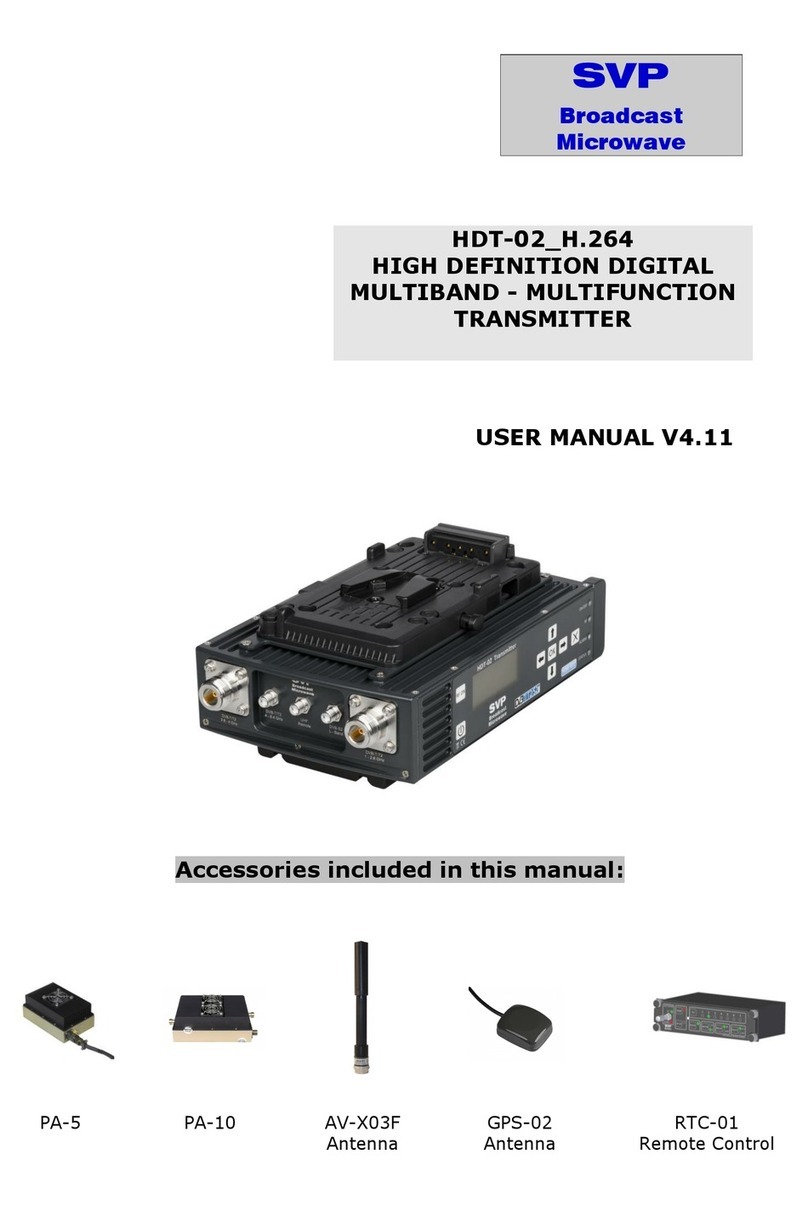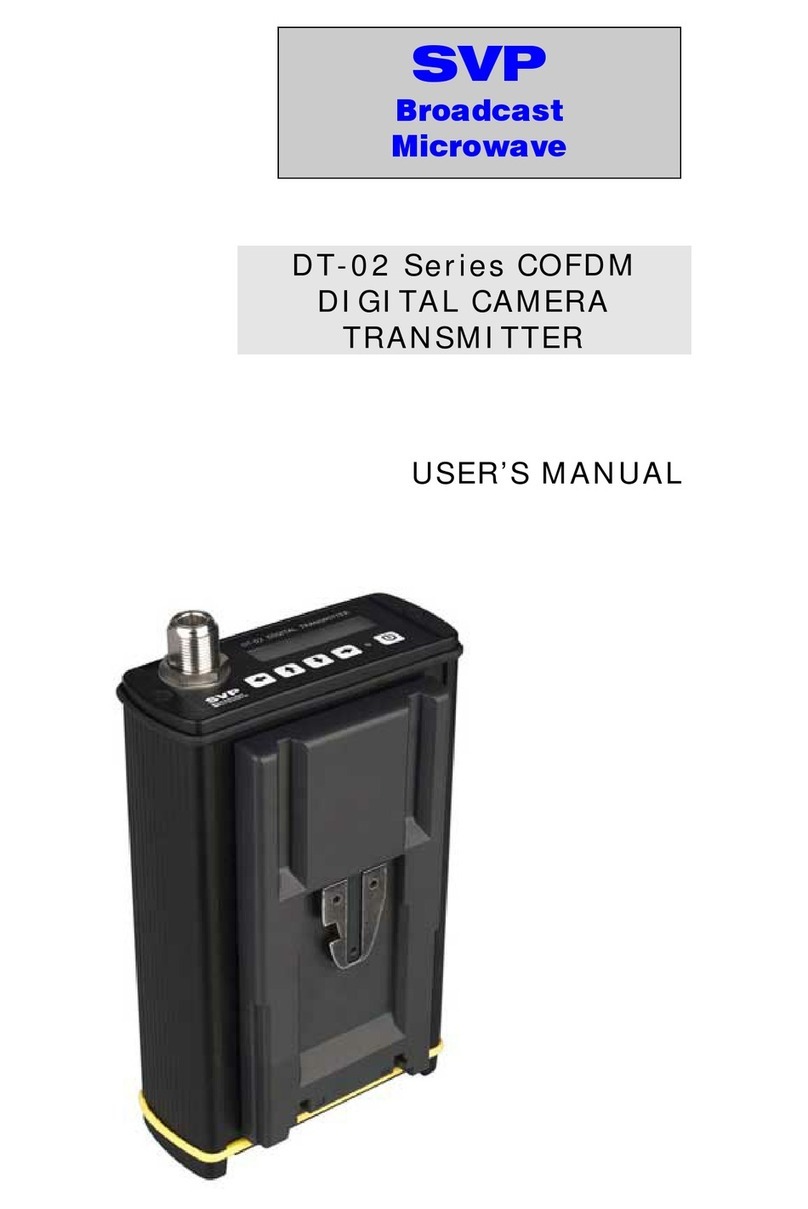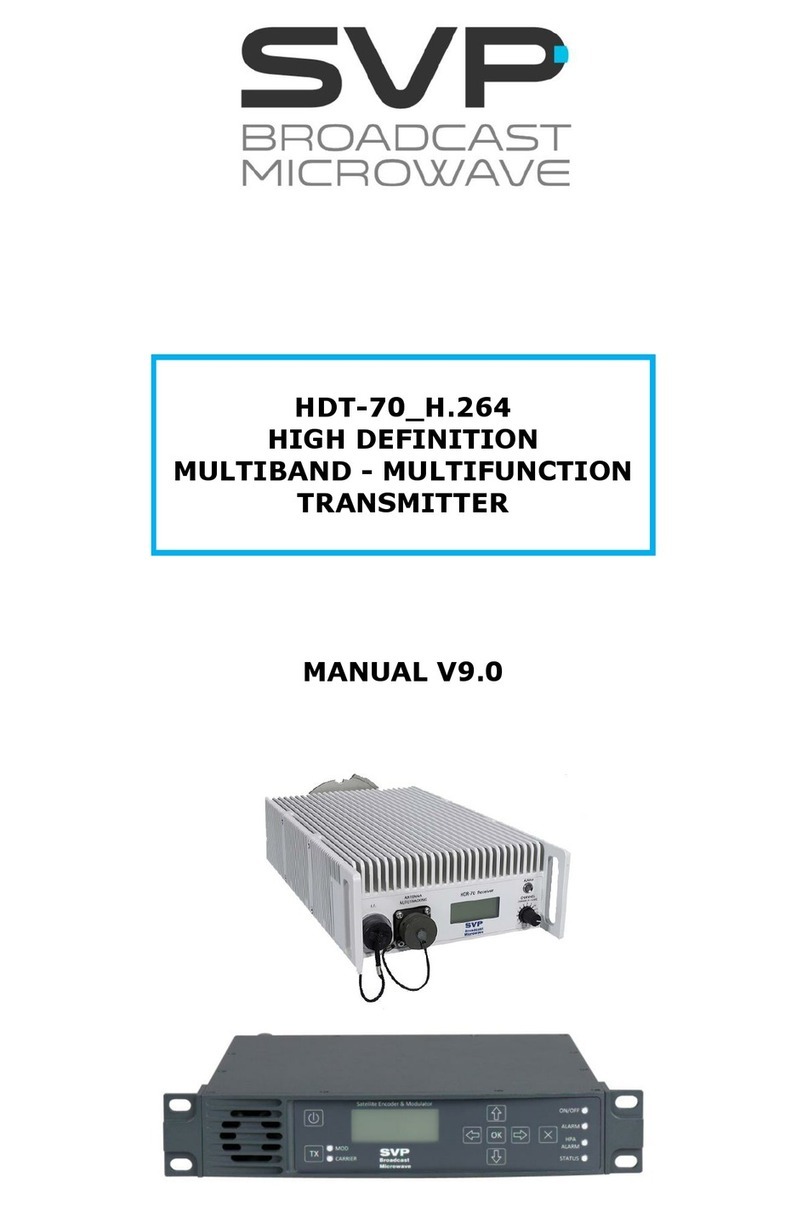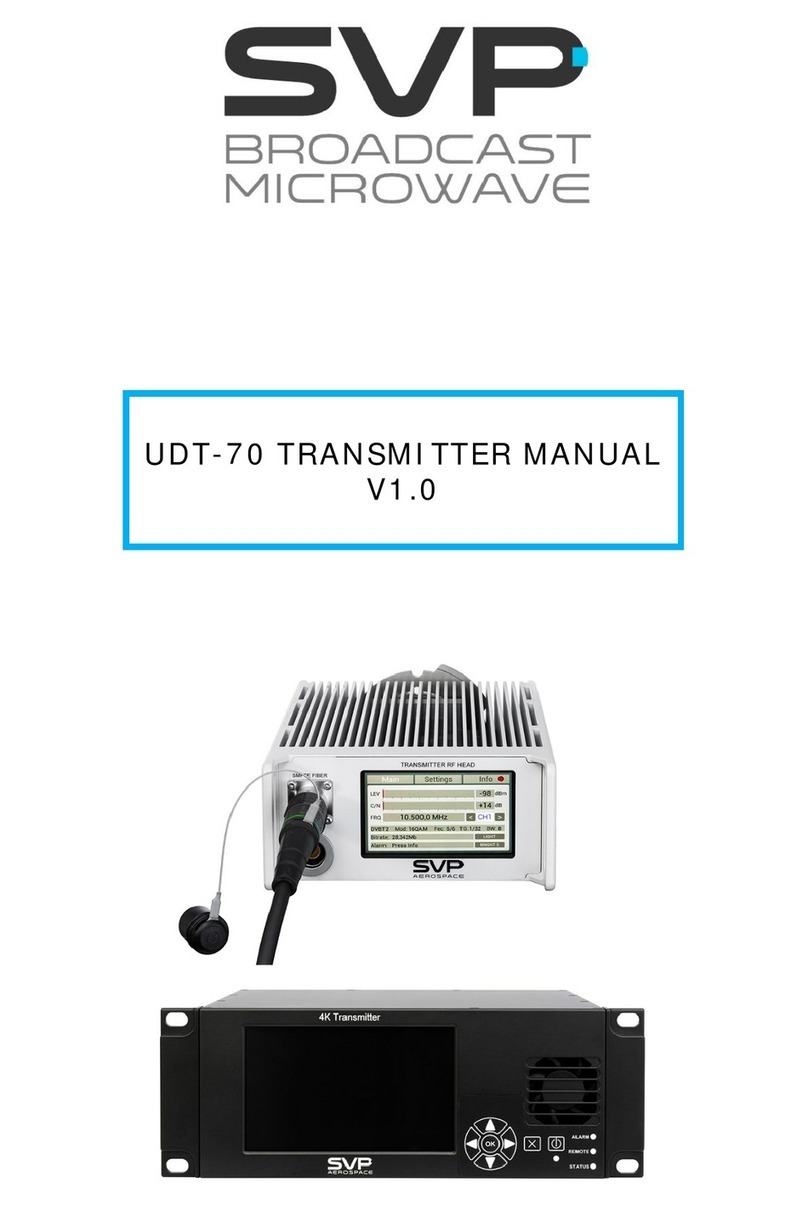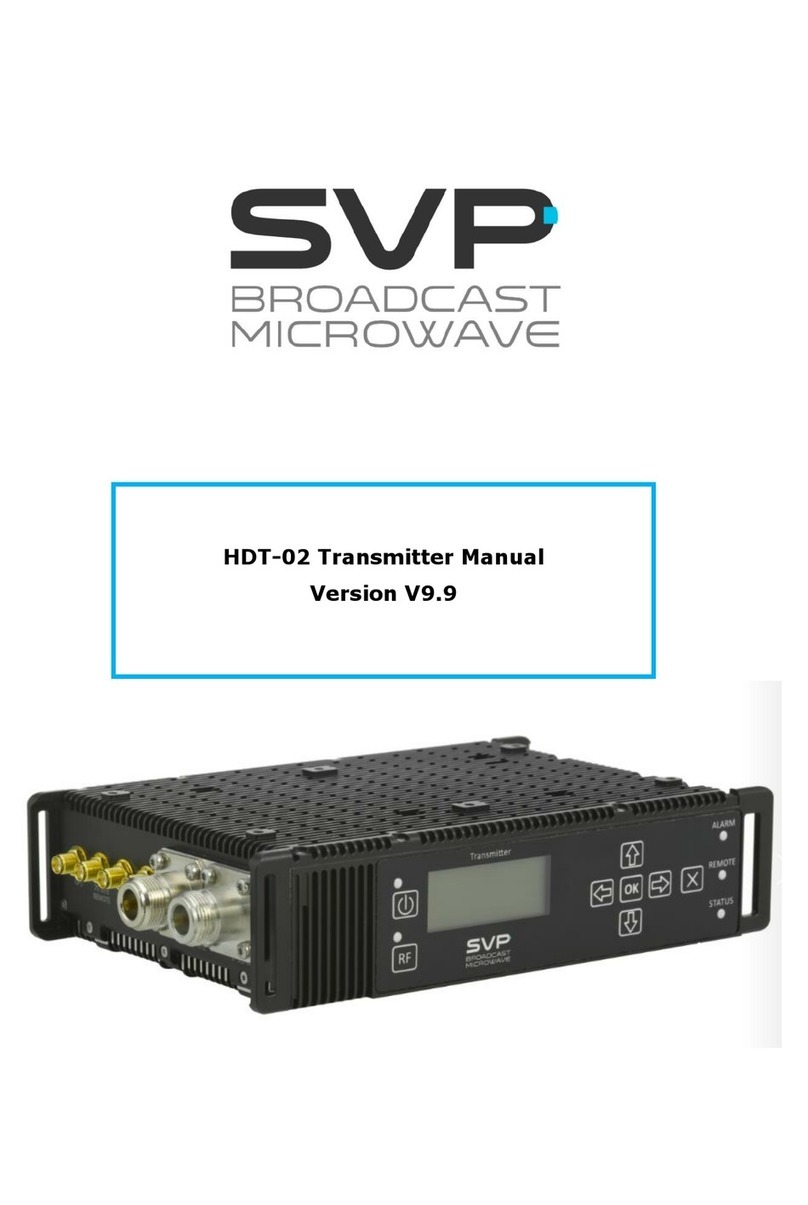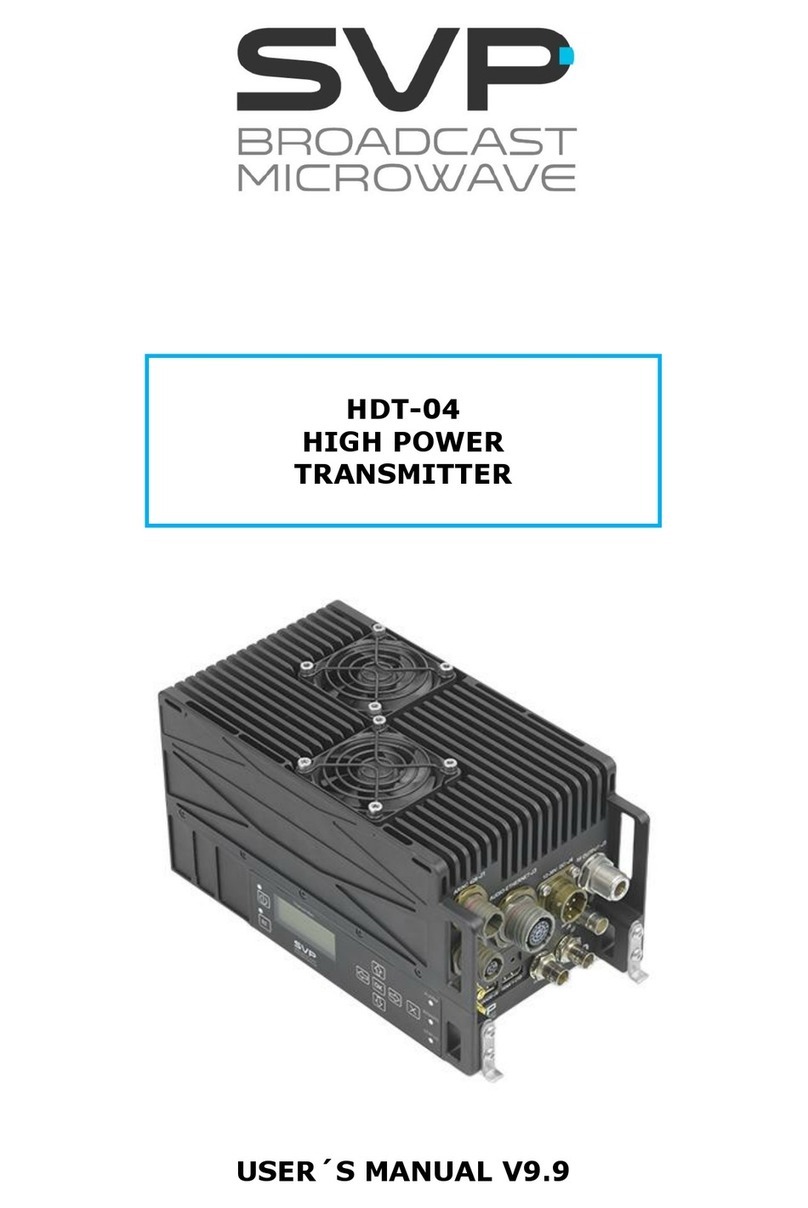
UDT-02 UHD HEVC Digital Camera Transmitter
MANUAL V1.0 3
Contents
Chapter 1: Introduction
This chapter provides a general description of the UHD UDT-02 camera
transmitter.
Chapter 2: Technical features
This part offers the transmitter’s physical and environmental characteristics.
Chapter 3: How to order
The third part provides the user with information on ordering and different
configurations available for these receivers.
Chapter 4: Transmitter operation and Menus
This part provides the user with all the necessary information to control and
operate the equipment properly. It is detailed the function of each button on
the keyboard and the information shown on the display, menus, etc.
Chapter 5: GPS Application
In this chapter, the use of the GPS incorporated system and some of its
applications are shown.
Chapter 6: Web Server
This chapter provides a detailed description of the Web Server tool. This
feature allows controlling the UDT-02 Transmitter through a website.
Chapter 7: Block Diagram
This chapter provides a block diagram of the UDT-02 Transmitter internal
performance.
Chapter 8: Equipment Installation
This chapter indicates the available connections of the transmitter, the
characteristics and the installation.
Chapter 9: Remote Control
The UDT-02 Transmitter can be controlled remotely by the RTC-01 or RTC-
03 devices or a RS-485 connection.
Chapter 10: Mechanical Dimensions
In this chapter, the mechanical drawings of the units described in this manual
are included.
Chapter 11: Preventive maintenance
This chapter explain the procedure that should be followed during the
transmitter's life.
Chapter 12: Warranty
This chapter contains warranty considerations and conditions.






